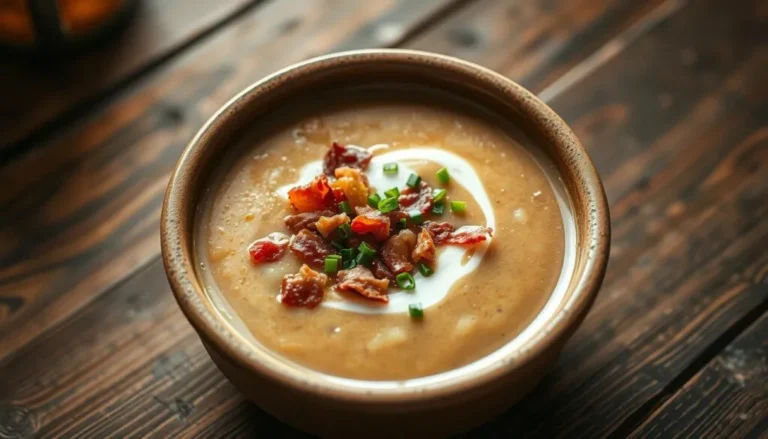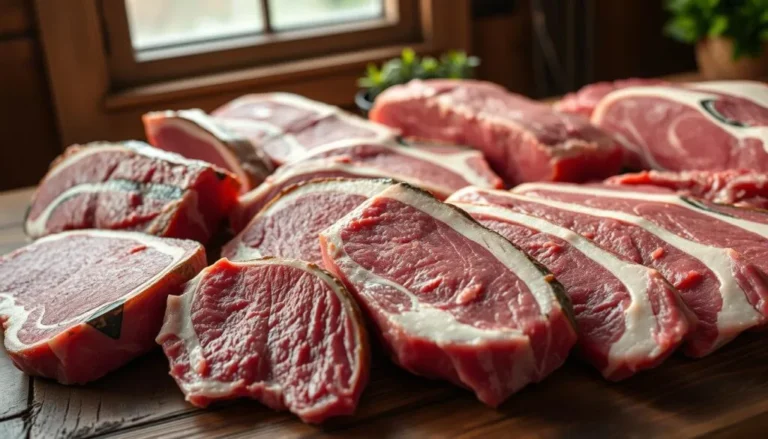Bread Meats Bread : 3 Easy Steps to a Delicious Meal
Table of Contents
Ever stood in your kitchen, craving a sandwich that turns a simple moment into a feast for the senses? Welcome to bread meats bread, where simple ingredients become extraordinary meals. Making the perfect sandwich is more than just stacking ingredients. It’s an art that blends flavor, texture, and personal touch.
Creating amazing sandwiches starts with the right bread and meats. Whether you’re cooking at home or love sandwiches, these three steps will take your sandwich game to the next level. Imagine biting into a sandwich that tells a story with every delicious bite.
In this guide, you’ll learn how to make sandwiches that wow your family and friends. We’ll show you how to pick the best bread and meats. You’ll discover the key techniques that make sandwiches truly special.
Key Takeaways
- Master the art of selecting premium artisanal bread
- Learn three simple steps to create perfect sandwiches
- Understand the importance of quality ingredients
- Discover techniques for maximizing flavor combinations
- Transform everyday meals into culinary experiences
The Art of Bread Meats Bread
Making the perfect sandwich is an art that needs passion, skill, and top-notch ingredients. Your journey starts with learning the basics of deli and charcuterie.

Sandwich making is more than just putting ingredients together. It’s about mixing flavors, textures, and quality ingredients. This turns a simple meal into a special experience.
Essential Sandwich Crafting Principles
To improve your sandwich skills, remember these key points:
- Start with high-quality bread
- Choose premium meats from trusted sources
- Balance flavors with matching ingredients
- Focus on texture and temperature
“A great sandwich is a symphony of carefully selected ingredients” – Professional Chef
Deli experts know each ingredient is vital. Bread gives structure, meats add protein and taste, and extras like spreads and veggies add depth.
Ingredient Selection Strategies
For charcuterie-inspired sandwiches, focus on:
- The quality and type of bread
- The cut and preparation of meats
- Complementary condiments
- Fresh, seasonal additions
Learning these techniques will make your sandwiches go from simple to gourmet. They will impress anyone who tries them.
The Art of Bread Meats Bread
Making the perfect sandwich is more than just using great ingredients. Professional home cooks know that the right tools can make a big difference. The tools you pick can change how you cook and the taste of your food.

Starting with the right kitchen equipment is key to making a tasty sandwich. Your tools help you work efficiently and make your food taste like it came from a bakery.
Essential Sandwich Preparation Tools
- Chef’s Knife: A sharp, versatile knife for precise ingredient cutting
- Serrated Bread Knife: Ensures clean cuts through crusty bread
- Hardwood Cutting Board: Provides a durable and hygienic preparation surface
- Grill Press: Creates crispy, evenly pressed sandwiches
- Sandwich Maker: Streamlines cooking multiple ingredients simultaneously
Using quality tools shows you care about your craft. Each tool is important for making your sandwiches better.
Selecting Superior Kitchen Equipment
| Tool Category | Key Features | Recommended Material |
|---|---|---|
| Cutting Boards | Knife-friendly surface | Maple, Walnut, Cherry |
| Knives | Sharp, Precise Cutting | High-Carbon Stainless Steel |
| Grill Presses | Even Heating, Crispy Texture | Cast Iron |
Buying professional-grade tools turns your kitchen into a place where you can make amazing sandwiches. Your tools are the start of your creativity in the kitchen.
The Art of Bread Meats Bread
Making the perfect sandwich is like creating a work of art. It starts with picking the best ingredients. You need to know how each part adds to a great meal. The right mix of specialty meats and artisanal bread can turn a simple lunch into a special treat.

To make a standout sandwich, choose your ingredients wisely. Start with top-notch specialty meats and artisanal bread. But the real magic happens when you know how to mix them.
Essential Ingredients Breakdown
- Specialty MeatsProsciutto
- Salami
- Roast beef
- Smoked turkey
- Artisanal Bread Types
- Sourdough
- Ciabatta
- Rye
- Focaccia
Flavor-Enhancing Ingredients
| Category | Top Recommendations | Flavor Profile |
|---|---|---|
| Cheeses | Aged cheddar, goat cheese | Sharp, creamy |
| Vegetables | Arugula, roasted peppers | Peppery, sweet |
| Condiments | Dijon mustard, herb aioli | Tangy, rich |
Your choice of specialty meats and artisanal bread is key. Each ingredient should complement and elevate the others. This creates a mix of textures and flavors that excites your taste buds.
Selecting the Perfect Artisanal Bread Base
Choosing the right artisanal bread is key for a great sandwich. Your local bakery has many tasty options. These can make your sandwich go from good to amazing.
When picking artisanal bread, think about these important points:
- Texture: Choose a bread with a crunchy outside and soft inside
- Flavor profile: Pick a bread that matches your meat’s taste
- Crust thickness and crunchiness
- Bread’s ability to hold sandwich ingredients
Different breads add special qualities to your sandwich:
- Sourdough: It has a tangy taste and a strong structure
- Ciabatta: It’s light and airy, with big air pockets
- Whole grain: It has a nutty flavor and is good for you
- Rye: It’s dense and has a bold taste
Go to your local bakery and check out their bread. Ask the bakers for advice on bread that goes well with your sandwich. The right bread can turn a simple meal into a fancy treat.
“Great sandwiches start with exceptional bread” – Artisan Baker’s Wisdom
Premium Meat Selection Guide
Making the perfect sandwich starts with picking top-notch specialty meats. These meats turn a regular meal into a feast for the senses. The right protein can take your sandwich from ordinary to extraordinary.
When choosing charcuterie for your sandwich, keep these points in mind:
- Texture: Pick meats that feel right with your bread
- Flavor intensity: Make sure the meat’s taste matches your bread and toppings
- Fat content: Go for meats that are juicy and full of flavor
Top Sandwich Meat Recommendations
Experts say these specialty meats make the best sandwiches:
- Prosciutto: Thin slices with a strong taste
- Roast beef: Tender and full of protein
- Salami: Spicy and aged for a bold flavor
- Smoked turkey: Lean with a smoky taste
Quality beats quantity when it comes to sandwich meats. Choosing the best meats makes your sandwich unforgettable. It’s a meal that will excite your taste buds and fill you up.
Premium Meat Selection Guide
Keeping your deli meats fresh is key to making great sandwiches. Storing them right keeps every bite tasty and tender.
Storing meat well means watching the temperature and how you handle it. Your fridge is essential for keeping meats fresh and safe.
Optimal Storage Temperatures
- Keep fresh meats at 40°F (4°C) or below
- Freeze meats at 0°F (-18°C) for long-term storage
- Use refrigerated deli meats within 3-5 days after opening
| Meat Type | Refrigerator Storage | Freezer Storage |
|---|---|---|
| Sliced Deli Meats | 3-5 days | 1-2 months |
| Whole Cuts | 3-5 days | 4-12 months |
| Processed Meats | 1-2 weeks | 1-2 months |
Storage Best Practices
To keep your gourmet ingredients top-notch, follow these storage tips:
- Always store meats in airtight containers
- Use clean utensils when handling
- Check expiration dates regularly
- Avoid cross-contamination
Pro tip: Label your stored meats with the date of purchase to track freshness and ensure you’re using the oldest items first.
Premium Meat Selection Guide
Choosing the right specialty meats can turn a simple sandwich into a work of art. Your first step is to learn what makes premium meats stand out. This knowledge helps you pick the best for your charcuterie-style sandwiches.
- Visual Appearance: Look for vibrant, consistent color without dry edges or discoloration
- Marbling: Fine, delicate fat streaks mean the meat is of high quality
- Texture: Meats that are smooth and firm, with little moisture, are premium
Sensory Quality Evaluation
Experts say to use all your senses to check meat quality:
- Smell: Fresh meats should have a clean, subtle scent
- Touch: A firm, resilient feel means the meat was handled well
- Color: Bright, even color shows the meat is fresh
“Great sandwiches start with exceptional ingredients” – Artisan Butcher’s Motto
Choosing high-quality specialty meats makes every sandwich special. Trust your senses and pick meats with vibrant colors, perfect marbling, and great texture.
Creating the Perfect Flavor Foundation
Making a great sandwich is all about mastering flavor. It starts with knowing how different ingredients work together. This is the first step to making a unique sandwich.
Begin by adding layers of flavor to turn a simple sandwich into a feast for the taste buds. Choose ingredients that add depth and complexity:
- Spread creamy artisan aioli for rich undertones
- Add pickled vegetables for tangy brightness
- Incorporate fresh herbs for aromatic complexity
- Experiment with unique condiment combinations
Professional chefs focus on balancing flavors. Here are some tips to help you build flavors:
- Match protein with complementary spreads
- Contrast textures for enhanced eating experience
- Use high-quality, gourmet ingredients
- Season each component individually
Your homemade sandwich can be as good as one from a restaurant. It’s all about choosing and layering ingredients wisely. Being creative and understanding flavors will take your cooking to the next level.
Essential Preparation Techniques
To make your artisanal bread the perfect sandwich base, learn to toast it right. Whether it’s for a quick lunch or a fancy meal, the right toasting can make your bread stand out.
How you toast your bread can change its texture and taste. Each toasting method brings out special qualities in artisanal bread, making every bite a treat.
Classic Toasting Methods
- Traditional Toaster: Quick and convenient for most bread types
- Oven Broiling: Creates a crisp exterior with a soft interior
- Skillet Toasting: Adds a rich, buttery flavor to your bread
Professional bakers say to choose a toasting method that fits your bread. Thicker, rustic breads need different techniques than delicate sourdough.
“The perfect toast is the foundation of an exceptional sandwich” – Artisan Baker’s Wisdom
Pro Toasting Tips
- Preheat your toasting surface for even browning
- Watch bread closely to prevent burning
- Use light butter or olive oil for enhanced flavor
- Let toasted bread cool slightly before assembling
Try out different toasting methods to find your favorite. Each way can highlight different textures and flavors in your fresh bread, turning a simple sandwich into a gourmet delight.
Essential Preparation Techniques
Learning how to prepare specialty meats can turn a simple sandwich into a work of art. Whether you’re using deli meats or fresh cuts, knowing the right cooking methods is key. This knowledge helps you make tasty and safe meals.
Cooking specialty meats needs precision and attention. Each type of meat has its own way to get the best flavor and texture.
Meat Temperature Guidelines
Keeping the right temperature is vital when cooking deli and specialty meats. Here are some tips to help you get it just right:
- Fresh meats should reach internal temperatures that kill harmful bacteria
- Deli meats need gentle heat to stay moist and not get tough
- Always use a meat thermometer for accurate temperatures
| Meat Type | Safe Internal Temperature | Recommended Cooking Method |
|---|---|---|
| Beef | 145°F (medium rare) | Grilling or pan-searing |
| Chicken | 165°F | Roasting or pan-frying |
| Pork | 145°F | Slow cooking or oven roasting |
| Deli Meats | Heated to steaming | Gentle warming |
Preparation Techniques for Perfect Texture
To keep your specialty meats at their best, try these expert tips:
- Let meats rest after cooking to keep juices in
- Slice against the grain for tenderness
- Use low and slow heat for deli meats
“The secret to great sandwich meats is respecting the ingredient and understanding its unique characteristics.” – Professional Chef
Pro tip: Always handle specialty meats with clean utensils and avoid cross-contamination to ensure food safety.
Conclusion
Mastering bread meats bread sandwiches is all about being creative in the kitchen. Every sandwich you make is a chance to mix flavors and textures in your own way. With the techniques from this guide, you can turn simple ingredients into amazing meals.
Start by picking the best bread and meats. Try out new combinations to see what you like. Whether it’s for a quick lunch or a fancy dinner, you can make sandwiches that impress.
Great sandwiches are all about finding the right balance and showing your own style. Don’t be shy to try new things. With time, you’ll know how to mix bread, meats, and other ingredients for unforgettable meals.
The world of bread meats bread sandwiches is full of possibilities. Your knowledge is just the start of a fun journey filled with tasty discoveries.
FAQ
What is the “Bread Meats Bread” concept?
“Bread Meats Bread” is all about making sandwiches with top-notch ingredients. It uses high-quality bread, premium meats, and other ingredients to make a gourmet sandwich. This approach focuses on layering flavors to make a simple sandwich into a culinary masterpiece.
What type of bread works best for a Bread Meats Bread sandwich?
The best bread for your sandwich depends on the meat and flavors you choose. Try artisanal bakery breads like sourdough, ciabatta, rye, or rustic country loaves. These breads have unique textures and flavors that match different meats well.
How do I choose the right meat for my sandwich?
Choose specialty meats based on their flavor, texture, and how they go with your bread. Look for meats from traditional delis to gourmet charcuterie. Quality, marbling, and how it mixes with other ingredients are key.
What equipment do I need to make a great sandwich?
You’ll need a sharp chef’s knife, quality cutting board, serrated bread knife, and serving platter. Meat slicers, toasting equipment, and condiment containers are also helpful. Good tools make a big difference in making sandwiches.
How should I store specialty meats?
Keep premium meats in the fridge at 33-40°F. Use airtight containers or vacuum-sealed packaging. Check packaging for storage tips to keep quality and safety.
What are some tips for layering flavors in a sandwich?
Aim for a balanced flavor by mixing complementary ingredients. Use condiments and spreads wisely, think about texture, and how each layer tastes. Try different combinations to find your favorite.
What’s the best way to toast bread for a sandwich?
Try pan-toasting, toasting, or broiling for different textures and flavors. Pan-toasting with butter adds a crispy outside and soft inside.
How can I tell if I’m selecting high-quality meats?
Look for good marbling, fresh color, and texture. A nice aroma is a sign of quality. Ask for advice at delis or charcuterie shops and taste before buying.
Can I make gourmet sandwiches at home?
Yes, you can! With the right ingredients and techniques, you can make amazing sandwiches at home. Focus on quality and learn how to prepare well.
How important is ingredient quality in sandwich-making?
Quality ingredients are key to a great sandwich. Use premium bread, meats, veggies, and condiments. They can turn a simple sandwich into a memorable meal.







